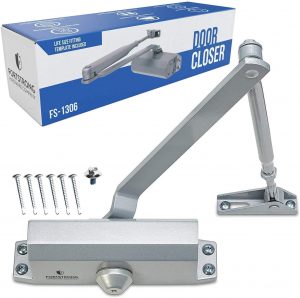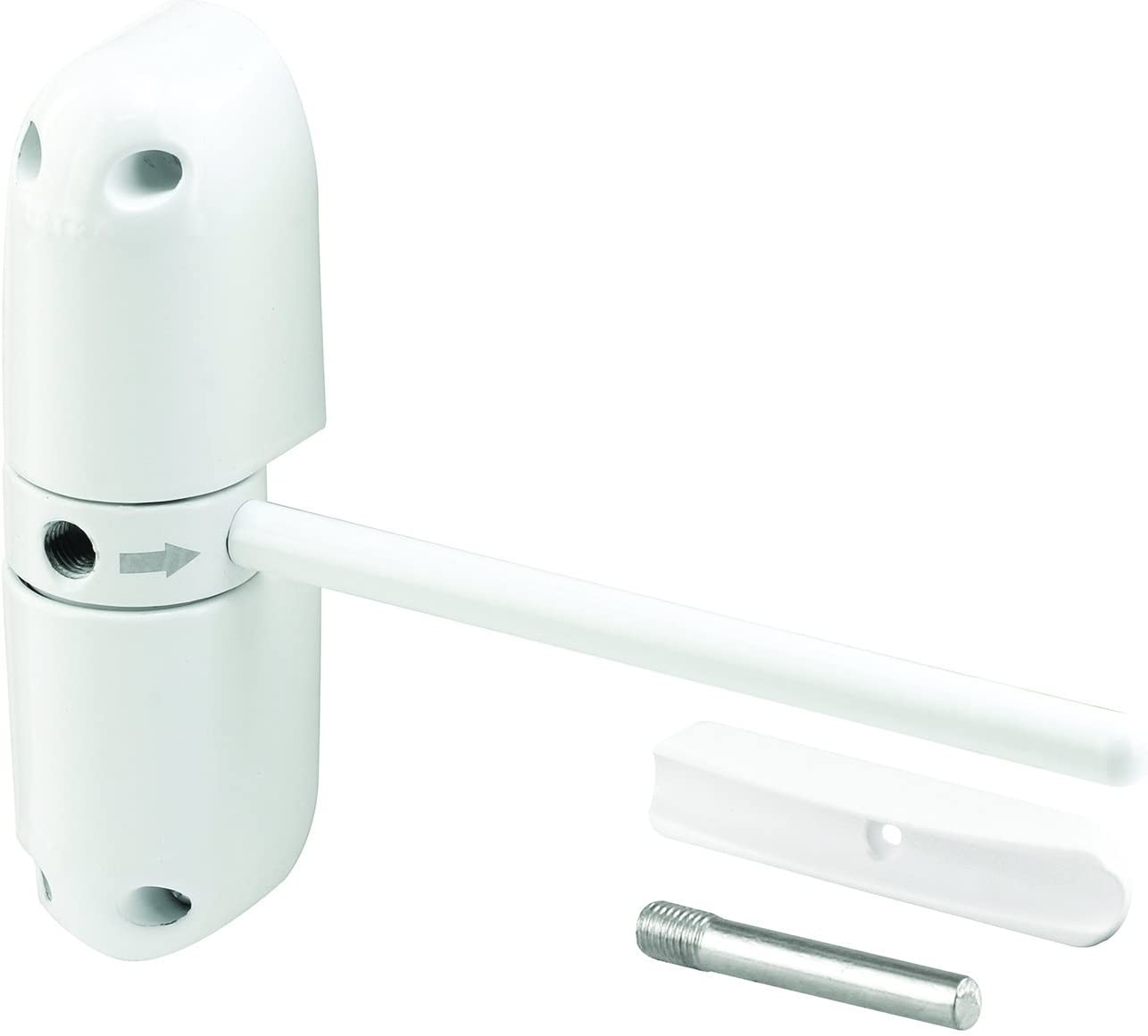After a relentless week at the office, it’s Sunday. You’re not having to go to work and have a wonderful time at your home. You’re sitting on your couch and enjoying a crucial match with your clan members online, things are getting complicated and your team is moving closer to a win.
Right at this time, the bell rings and now you’d have to leave the winning match at hand and open the door. Do you want such a disturbingly irritating event to occur?
Getting an automatic door can solve all these issues for good!
Automatic door closers make things a whole lot easier for the users. They’re equally beneficial for both personal and business use. Here in our tremendously detailed guide on the automatic door closer, we’ll learn all about it and how they can be utilized to the maximum capacity.
Automatic door closers can vary in types, sizes, and opening mechanisms. They’re used chiefly for security reasons.
Plus, they can also be used for convenience, as you won’t need to walk up to the door to open it when someone arrives and close it when someone leaves.
Automatic Door Closer | Everything You Want to Know
It’d be difficult for one guide to explain the numerous benefits this modern mechanism offers. Here in the following segments, we’ll try to enlighten your perspectives on the issue briefly.
What is a Door Closer?
Well, let’s first learn about it in depth. A door closer refers to a technologically advanced door that doesn’t need anyone to close it manually. Instead, it shuts by itself.
This unique mechanism would save the users plenty of time and energy, which they needed to spend just to shut the door every time someone leaves.
Types of Door Closers
Door closers come in different forms, shapes, and engineering mechanisms. Now, we’ll learn about some of the most common types of door closers.
Door Closers that Use Regular Arm
The regular arm closers use a pull-side technology located at the outer part of the door closer. This mechanism uses dual arms, one of which is connected to the frame while the other is attached to the spring-loaded box on the side of the pulls.
The spring squeezes when the door is opened, and while leaving it without force, the spring enlarges back to its previous position, pressuring the frame to close the door. This is one of the most power-saving systems that you can go for.
This particular mechanism is the most common variant of all the door closers we’ll discuss in the next segments.
Door Closers with Parallel Arm
Here is another sort of automatic door closer that can work equally well. Unlike the previous one, this one uses the arms on the push side. It uses a more or less similar mechanism to the first one.
Being on the push side, it’s usually used for businesses. You can also see these arms in school buildings and other office spaces as they’re pretty to look at and decrease the risks of vandalism.
Door Closers with a Top Jamb Mounting
Finally, there are the top jamb mounting systems. This also uses a dual-arm mechanism but differently than the first two types.
Unlike the previous mentions, the spring box is installed on the face of the door. These are usually used for storefront or aluminum doors, as they have a small top rail space.
How to Adjust Door Closers
Adjusting the door closers can seem a bit tricky. Here’s how you can do it yourself.
Get the Cover Off
To get the perfect adjustments, you’d have to use the adjustment valves. But usually, they’re protected by a cover. So, first, you’d have to remove the cover. Usually, they’re just locked by tension, so just pulling them can get it removed.
Closing the Hydraulic Valves
Hydraulic valves need to be closed before you start any other processes.
Balancing the Backcheck
Start by making 1.25 to 1.5 counterclockwise turns and get the door opened. Make sure the stop is steady and hard.
The door should gradually slow its pace to 75 degrees, so you don’t get surprised by a loud slamming noise because of the winds. A counterclockwise valve rotation lets you open the door wide.
Slow the Closing Speed Down
Closing speed is one of the basic adjustments. If your door has a faster closing speed, you can slow it down by rotating the valves clockwise.
Fix the Latching Speed
With 1.5- 2 counterclockwise turns, you can get the correct latching speed.
Fix your latching speed based on the purpose of using a closing door. Increasing the latching speed by counterclockwise turning would be better for outside doors as they’d close faster.
But, it’s better to make it slower by clockwise turning in a business atmosphere, so they get slammed.
What Does S and L Mean On a Door Closer?
You may often notice the signs S and L on the door closer. It’s pretty common for the door closers to have those signs. But what do they even mean?
Well, S and L typically refer to the value of speed adjustment, especially on the commercial-grade door closers.
The word S chiefly means sweep the speed of a door closer. On the other hand, the word L refers to the Latch speed adjustment possibilities.
What Are Door Silencers?
You may have come across the word “door silencers” many times. Well, if you don’t know yet what they are, then follow the further discussion.
So, door silencers are a mechanism that is placed to reduce the noise when the door is closed. Especially with automatic door closers, wind or an increased latching speed can make a loud slamming noise. This can scare the children and elderly. Extensive noise can also deteriorate the conditions of heart patients.
That’s why door silencers are installed to keep these noises down.
It’s made of a rubberized pad and placed on the frame, so the impact is slowed down and noise is kept to a minimum.

Do Door Closers Require Power?
Door closers are usually a completely automated system. They’re designed mechanically with a spring mechanism. The compression and release of the spring are the chief power source in this case. So, it’s not dependent upon any electrical input, making it an exceptionally power-efficient model.
But in recent times, that sort of mechanical model is coming under challenge from their electric counterparts. The smart automatic door opener and closer system, for instance, uses power. And utilizes technologically advanced mechanisms to offer a completely automated system.
How Do I Stop My House From Door Slamming?
Door slamming is by far the most irritating issue you can ever think of. But, by using the techniques mentioned below, you can fix this issue faster:
- Use foam strips to lower the noise
- Felt pads can also be a stunning alternative in terms of reducing the impact of noise
- Install quality door closing system
- Readjust the door closer. Try lowering the down, closing speed so the door doesn’t slam against the floor in the first place.
- Changing the hinges can also minimize the noise output
- Add Pinch guards for a significantly lower noise generation
- To minimize the chore without much difficulty, you can add draft stop clothes underneath the door.
Well, these are some of the most effective tips for minimizing the issue of the door getting slammed. If all the mentioned activities are not solving the issue, calling in a technician would be the most pertinent action.
FAQs
How do I choose an automatic door closer?
First, decide where you want to use them. The purpose of using an automatic door would tell the type of door needed. Then check the quality like the material, door quality, security, and others.
How much does an automatic door closer cost?
They can start at $40-$50 but go up to $200 or more based on the quality and space covered.
What is the automatic door closer called?
The typical door closer is also called a door opener.
Which type of door closer is best?
Regular arm door closers are known to be one of the most commonly used door closers and, hence, should offer a decent service.
How long does it take to install a door closer?
The time for installing a door closer can vary depending on the experience of the installer. For experienced door installers, it can take from 45 to 60 minutes. But for regular installers, it can take more than that.
What is a back check on a door closer?
A backcheck is a door closer tool that reduces the door’s speed, especially because of heavy winds or pedestrians. It’s chiefly used to minimize the potential damage to people or materials situated close to the door.
Final Thoughts
In our highly detailed guide, we’ve critically analyzed the different aspects of an automatic door closer and provided tons of information on the various types and different adjustment methods. Going through the guide would offer you a quality, in-depth understanding of these doors and help you pick the right one that suits you!
Automatic door closers are an outstandingly effective system that offers tremendously versatile services like securing the home/office, reducing hassle and saving time, improving air conditioning, and so on.
Getting a quality door closer can certainly make a world of difference both in your house and in office spaces too.
So, why is the wait then? Get your door closer installed today, and relish the world of convenience with ease!

